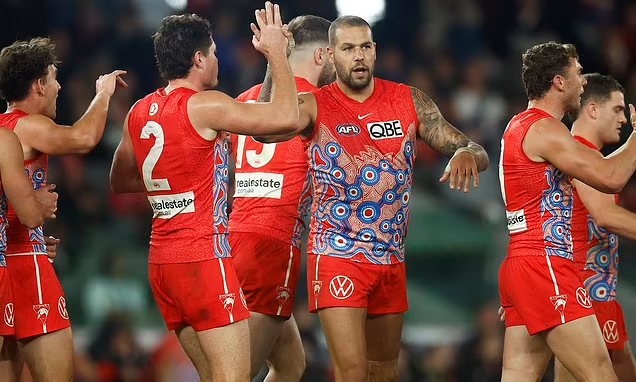
No training facilities. No club infrastructure. A team with a name but lacking identity.
That was the fledgling West Coast Eagles 37 years ago. Reflecting on it now, it seems almost absurd that such a team could compete at the highest level of the game, let alone challenge the competition.

With a squad of just 35 players, 17 fewer than all of its competitors, Ron Alexander and his band of nomads propelled the club into the big leagues with 11 wins and 11 losses. It remains the highest winning ratio of any expansion club.
They clinched eighth place in a top five system within a 14-team competition. Against the odds, they forged a distinctive character, laying the foundation for the club’s personality that persists to this day.
These pioneers will be honored tomorrow as guests of the club at the round five clash with Richmond. They might pause to reflect on the stark contrast between Optus Stadium and their former home ground at Subiaco Oval.
The club has come a long way figuratively, with its Mineral Resources Park home base in Lathlain, about five kilometers east of the former football headquarters.
They penned the first chapter in club history, and this weekend we pay homage to them. Symbolically, it mirrors the diverse paths taken by those in the initial squad.
Like little streams merging into a larger body of water, the West Coast Eagles’ initial squad originated from diverse sources. Some returned from the eastern states, others revived their careers, while some emerged from remote or undiscovered talent pools.
Each of the 35 players on the inaugural Eagles list had a unique story. Together, they formed the cornerstone of what would become a formidable entity in national Australian football.
When we talk about resilience, this team is the epitome. Many players signed up for a cause that was more theoretical than tangible. The VFL and its clubs resisted their entry, driven more by financial considerations than visionary foresight.
However, by the time the new entity was unveiled on October 30, 1986, at the Merlin Hotel (now the Hyatt) on St George’s Terrace, the blue and gold Eagles were already playing catch-up.
The experience and endorsement of Ross Glendinning, a star at East Perth and winner of the 1983 Brownlow Medal at North Melbourne, were pivotal. His commitment signaled the club’s credibility to others.
Players like Dean Turner, Phil Narkle, and John Annear returned from Melbourne clubs. Meanwhile, others sought a second chance. Steve Malaxos, an All-Australian captain in 1986, returned to Claremont after a challenging stint at Hawthorn. He became the Eagles’ first Club Champion.

Robert Wiley, who played with Perth after returning from Richmond, resumed a VFL career he thought was over, adding to the diverse tapestry of the inaugural Eagles squad.
Former Collingwood utility player Geoff Miles, who had previously spent time at Claremont, saw his VFL career revived by the new club.
Adrian Barich left his mark at Perth after being recruited from the ACT. Additionally, seasoned WAFL players like Dwayne Lamb (26 at the beginning of the 1987 season), Don Holmes (28), Don Langsford (26), and Phil Scott (26) added depth to the team.
On the other hand, the club resisted attempts from Melbourne clubs to attract promising talents such as 1985 Teal Cup stars John Worsfold, Chris Lewis, and Paul Peos.
Graham Moss, instrumental in assembling the initial squad, alongside East and West Perth star George Michalczyk, navigated the tight timelines, restrictions, and hurdles imposed by the VFL admirably.
Despite Hawthorn star Gary Buckenara’s desire to join, legal constraints enforced by the Victorian Supreme Court compelled him to honor his agreement with the Hawks. Similarly, East Fremantle ruckman Paul Harding had committed to Hawthorn but returned home to play in the 1994 premiership after his obligation with Hawthorn concluded.
To compound matters, the club faced fines for alleged ‘poaching,’ in addition to inflated transfer fees for players like Malaxos and Miles, despite both spending the 1986 season in the WAFL. Miles had also played for the Tigers in 1985.
The efficiency of the recruitment team was evident as players like Michael Brennan, Worsfold, Lewis, and Chris Mainwaring contributed to both the 1992 and 1994 premiership victories. Lamb (1992) and David Hart (1994) also tasted the ultimate success in football.
These players laid the foundation for the club’s history, and this weekend, they are rightfully honored.






